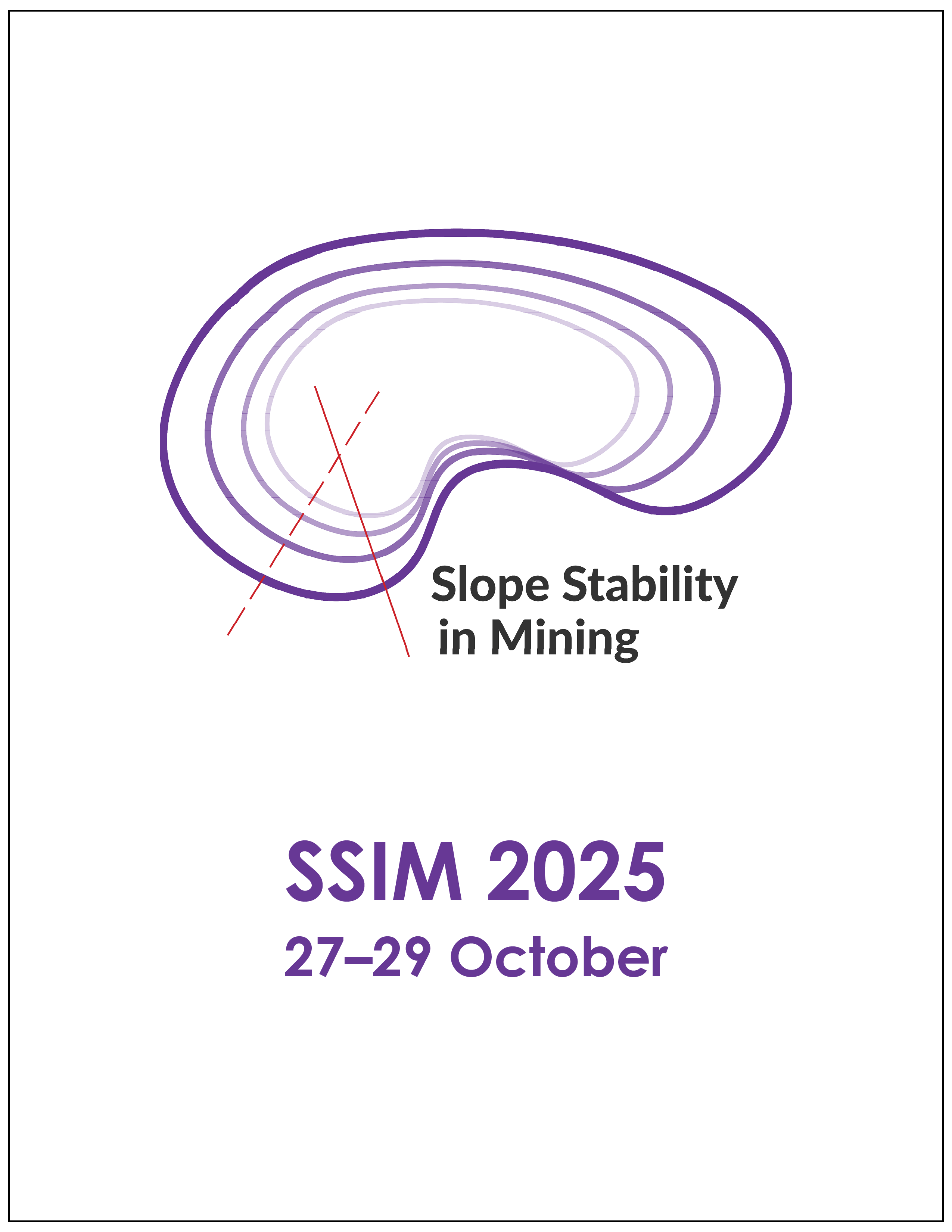Representation of faults and fault zones in 3D numerical stability analyses of open pit mines

|
Authors: Miller, AK; Peik, B; Tsai, A; Mehrabifard, A; Lawrence, K |
DOI https://doi.org/10.36487/ACG_repo/2535_31
Cite As:
Miller, AK, Peik, B, Tsai, A, Mehrabifard, A & Lawrence, K 2025, 'Representation of faults and fault zones in 3D numerical stability analyses of open pit mines', in JJ Potter & J Wesseloo (eds), SSIM 2025: Fourth International Slope Stability in Mining Conference, Australian Centre for Geomechanics, Perth, https://doi.org/10.36487/ACG_repo/2535_31
Abstract:
Accurate representation of faults, particularly complex fault zones, is a critical component of large-scale numerical modelling in open pit mining, where faults exert a significant influence on observed failure mechanisms and overall slope stability. This study explores the complexities associated with modelling major, heterogeneous faults and fault zones in numerical analyses for open pit mine slopes. Major faults are often characterised by a complex internal structure that extends beyond a simple planar discontinuity. They can be composed of a central core of fault gouge surrounded by zones of sheared or damaged rock of varying quality, including fault splays and lenses of weaker material distributed throughout the fault’s influence zone. Representing such faults as a single discrete plane with an assigned gouge strength may lead to oversimplified failure mechanisms as potential failure surfaces may exploit the surrounding, comparatively more competent but fractured rock or weaker pathways, such as fault splays or localised gouge accumulations within the broader fault zone. Alternatively, applying fault gouge strength across the entire damage zone of a fault would provide for conservative and economically unfavourable slope designs. To avoid such pitfalls, engineers must acknowledge and account for the heterogeneous nature of the fault zone when selecting fault geometry and material properties for numerical modelling, which requires careful consideration of the geological characteristics and potential failure pathways within the fault structure. Through a series of comparative simulations, this work evaluates the impact of fault representation in numerical models and their impact on slope stability predictions. It examines common approaches for representing faults, such as discrete interfaces, volumetric weak zones, or a fault core with associated damage zone, highlighting their respective capabilities and limitations in capturing the intricate behaviour of these geological discontinuities. The study explores the sensitivity of model results to variations in fault and damage zone representation, assumed strength parameters, and the spatial distribution of weaker materials within the fault structure. The findings, which indicate stability outcomes are critically dependent on the representation and attributes of the zone surrounding the fault, highlight the importance of developing improved structural models and using this information increases confidence in geotechnical stability analyses.
Keywords: open pit mining, slope stability, numerical modelling, fault zone representation, damage zone modelling
References:
Hoek, E & Bray, JD 1981, Rock Slope Engineering, CRC Press, Boca Raton.
Hoek, E & Marinos, P 2000, ‘Predicting tunnel squeezing problems in weak heterogeneous rock masses’, Tunnels and Tunnelling International, vol. 32, no. 11, pp. 45–51.
ITASCA 2023, FLAC3D: Fast Lagrangian Analysis of Continua in Three-Dimensions, version 9.0, computer software, Minneapolis, https://www.itascacg.com/software/FLAC3D
Murphy, B, Barnett, W & Joaquim, A 2024, ‘Including fault structures in your slope stability analyses – a practical implementation approach’, Proceedings of the International Slope Stability Symposium 2024, Belo Horizonte.
Palmström, A 1995, A Rock Mass Characterization System for Rock Engineering Purposes, PhD thesis, Oslo University, Oslo.
Read, J & Stacey, P (eds) 2009, Guidelines for Open Pit Slope Design Series, CSIRO Publishing, Melbourne.
Riedmüller, G, Brosch, F, Klima, K & Medley, E 2001, ‘Engineering geological characterization of brittle faults and classification of fault rocks’, Felsbau, vol. 19, pp. 13–19.
Severin, JM 2017, Impact of Faults and Fault Damage Zones on Large Open Pit Slopes, PhD thesis, The University of British Columbia, Vancouver,
Sjöberg, J 1999, Analysis of Large Scale Rock Slopes, PhD thesis, Luleå Tekniska Universitet, Luleå.
Stead, D & Wolter, A 2015, ‘A critical review of rock slope failure mechanisms: the importance of structural geology’, Journal of Structural Geology, vol. 74, pp. 1–23,
© Copyright 2025, Australian Centre for Geomechanics (ACG), The University of Western Australia. All rights reserved.
View copyright/legal information
Please direct any queries or error reports to repository-acg@uwa.edu.au
View copyright/legal information
Please direct any queries or error reports to repository-acg@uwa.edu.au

